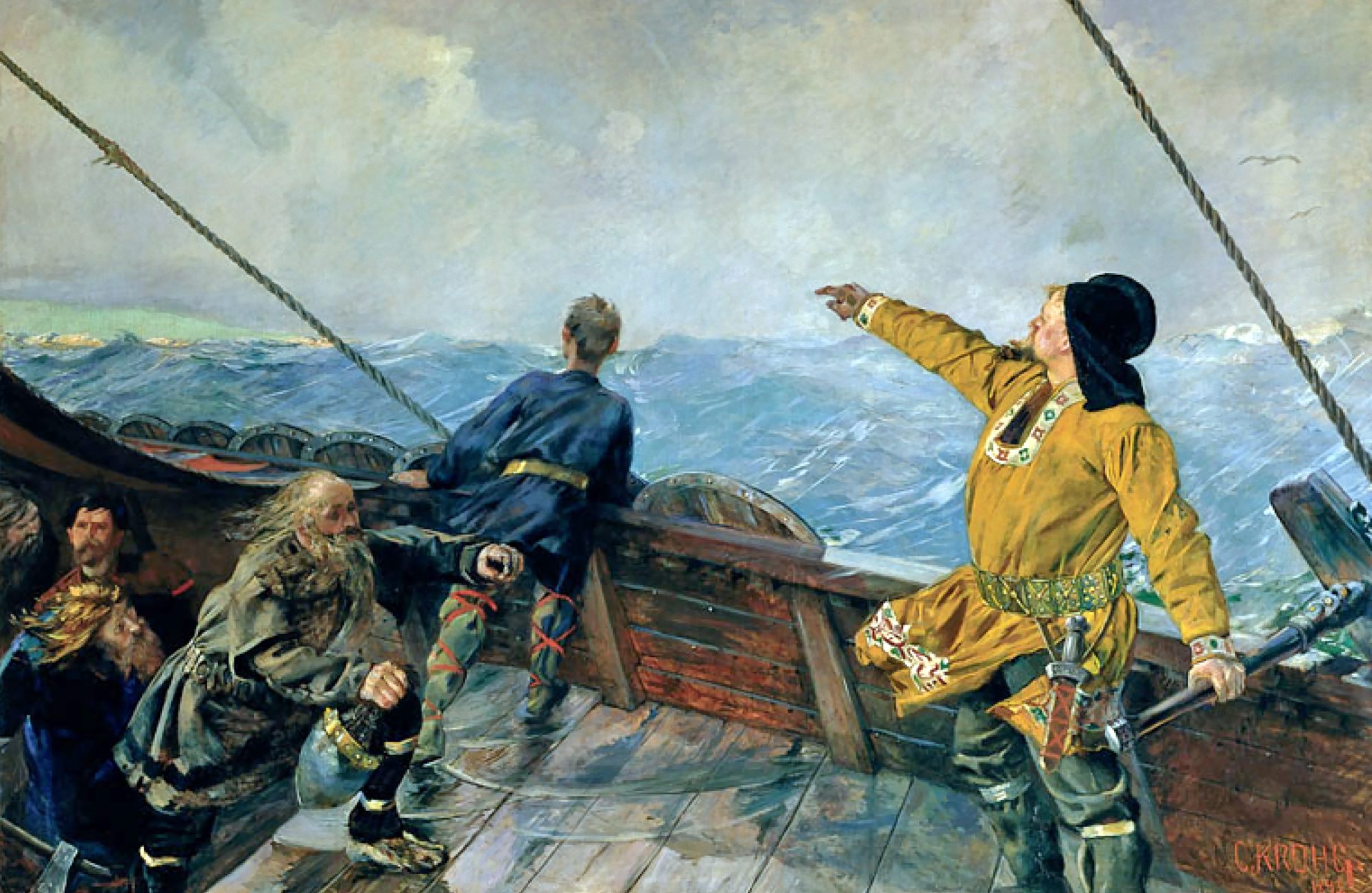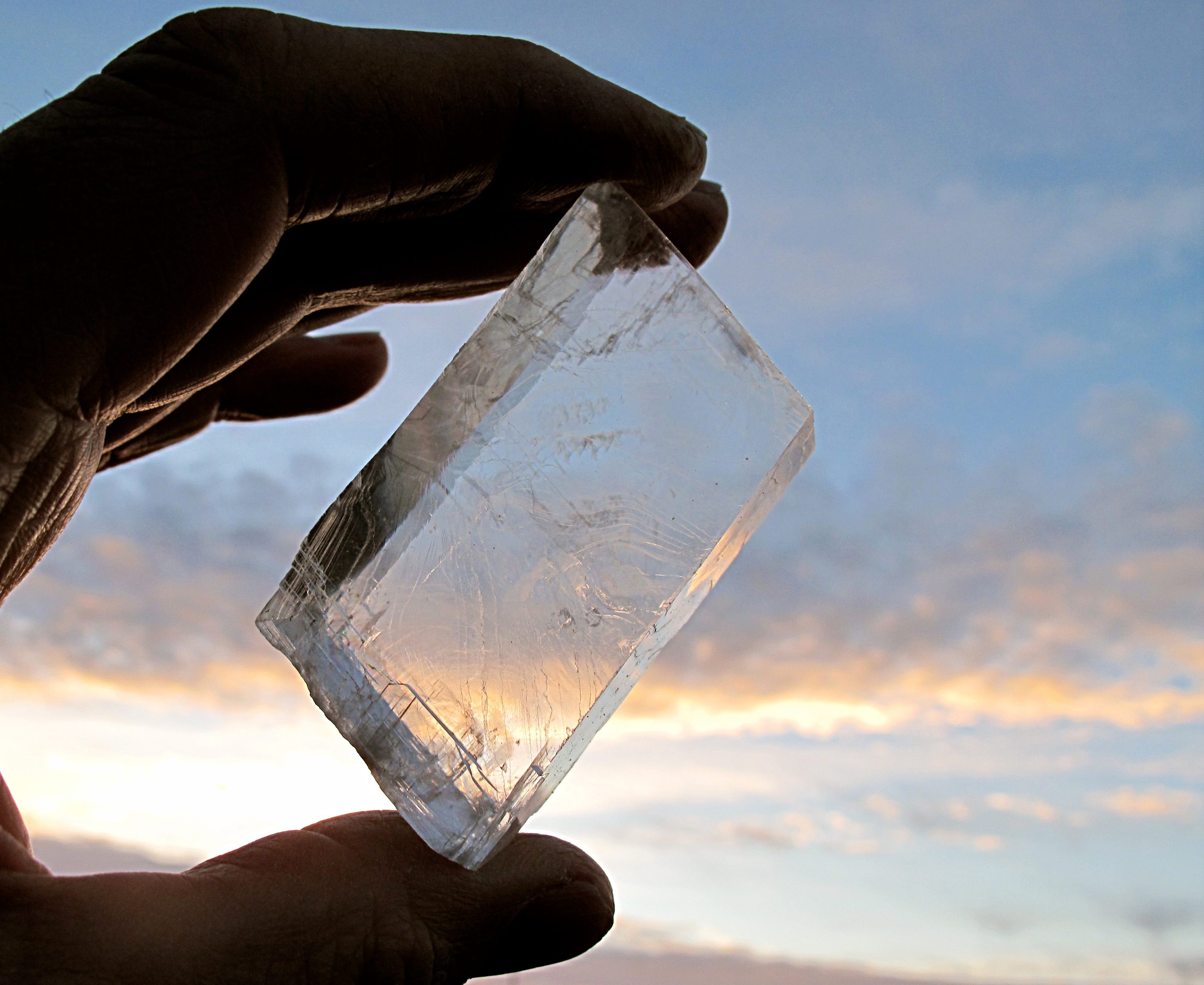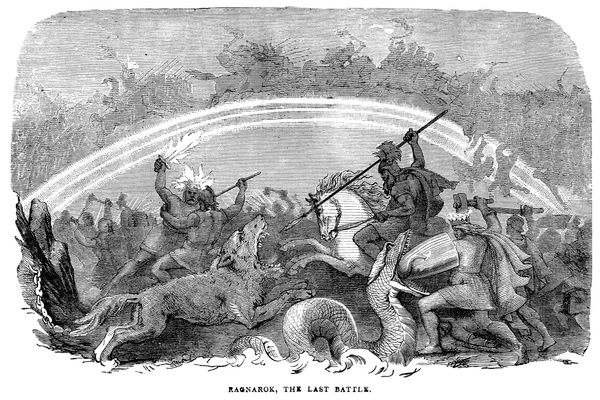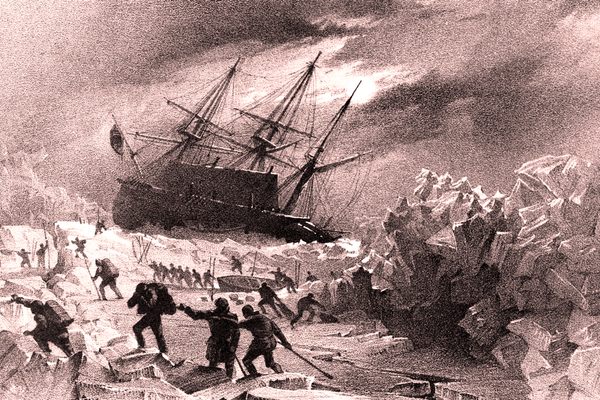Why Can’t We Figure Out How the Vikings Crossed the Atlantic?
Crystals might have helped them navigate—or maybe not.

Here is what we know: In the 10th century, some Vikings piled into boats and shoved off the shore of what is now Norway. They eventually ended up in Greenland, more than 1,000 miles away. How they found their way there? No one is exactly sure.
It was a long voyage through the dicey water of the North Atlantic—three weeks if all went well—with land rarely in sight. Their boats were sturdy, made from planks called strakes held together with iron rivets, but a swift and steady vessel was no guarantee of safe passage. “The Vikings were superb boatbuilders, but that great skill would count for nothing if they could not navigate properly,” says Stephen Harding, a biochemistry professor at the University of Nottingham and author of Science and the Vikings. “If a boat got lost at sea, that would almost certainly prove fatal.”
Navigation, however, was no easy task. There was no map or chart to rely on, no sextant for celestial navigation, and no magnetic compass to help with dead reckoning. (That was how Columbus did it 500 years later.) The Norse sagas offer a few hints about how Vikings rowed and sailed along—but they are vague and incomplete. Close to shore, Viking mariners relied on coastal landmarks, such as how the sun seemed to hang between two particular mountains. Out at sea, when they were lucky, they had the sun and the predictable movements of migratory birds. But the sagas shed little light on how they managed during cloudy or stormy days, common occurrences in the North Atlantic.
A 1942 translation of the sagas tells of choppy seas, and sailors “beset by fogs and north winds until they lost all track of their course.” When the weather soured, crews described the feeling of hafvilla, or “bewilderment.” If clouds and fog veiled their usual visual referents, they could only drift and wait until the sun returned to restore their bearings.
But some modern researchers think that Vikings actually did have rainy-day navigation options. And they think it may have had something to do with crystals.

Fifty years ago, late Danish archaeologist Thorkild Ramskou proposed that Vikings may have navigated with the help of what are called sunstones—probably chunks of calcite crystal, also called Iceland spar, that might be able to reveal the position of the sun even when it is behind clouds or has slunk below the horizon.
How this works isn’t entirely understood, but a number of research groups have tried to figure it out. Ramskou pointed to how calcite treats polarized light—that is, waves of light vibrating in a single plane, instead of in all directions—in a way that creates patterns observers can see. In 2011, a research group from the University of Rennes reported success pinpointing the sun by putting a dot on top of a calcite crystal and observing it from below. Ramskou proposed that the sailors could have used the crystal to keep track of the sun’s position, and then nudge the ship in the general direction they wanted to go. Assuming this actually works, which is itself no certainty, would it have been enough to get them from one shore to another?

Earlier this month, Dénes Szás and Gábor Horváth, physicists at Budapest’s Eotvos University, published a report in Royal Society Open Science describing how they modeled 36,000 voyages during various seasons. Based on their calculations, the researchers report that if a Viking crew had calibrated a sunstone and checked it every three hours, there was more than a 90 percent chance they’d get close enough to see the shore of Greenland. (A smattering of caveats, though: The researchers didn’t account for squalls blowing through, and assumed that the ships didn’t drift too far off course at night, when the crews stopped rowing.)
Harding, who was not involved in the work, thinks it holds water. “Szás’s and Horváth’s study is, in my opinion, the most exciting study on Viking sunstones since the original suggestion by Thorkild Ramskou in the 1960s,” he says.
But it’s not a conclusion, and this question of how the Vikings got where they ended up is still cloudy. “The latest study seems to prove that, if the Viking seafarers had a calibrated instrument based on such sunstones, then this would have helped them in their long journeys when landmarks or other signs such as migrating birds were not visible due to clouds,” Harding says.

The Vikings themselves haven’t proven to be much help in solving the puzzle. The stones are indeed mentioned in the sagas, which refer to them as sólarstein, but they’re not cast as tools. There’s also the question of how much stock to put in the sagas as historical sources, rather than the hybrids of fact and folklore they appear to be. “Even if [a sunstone was] found on a ship, there would be no proof it had been used as a navigational aid unless it was attached to a dial of some sort,” Harding says, to convert its optical properties into something actionable.
Viking archaeological sites haven’t offered evidence of their use, either, but crystals have turned up in suggestive places. In 2013, a chunk of calcite was found in the wreckage of a 16th-century British warship near the Channel Islands—only a few feet from known navigation tools. If the crystal had been used for wayfinding, “it’s not unreasonable to suppose that these skills may have been passed down from the Vikings who controlled the seas around the British Isles centuries earlier,” Harding says. But arriving at that conclusion requires quite a bit of mental hopscotch.
“The only proof would be the finding of a few sunstone crystals, or a detailed description of a sunstone and its use in a Viking saga,” Horváth says.

Harding also thinks it wouldn’t hurt to get out on the water. Since “modeling and computer simulations are most powerful when backed up by experimental data,” he suggests setting out on a modern recreation of those voyages. (Harding helped crew the 100-oar-strong Draken Harald Hårfagre, a recreated Viking ship, in 2013, before its trip across the Atlantic in 2016.)
For now, sunstones “will remain a hypothesis at least for the foreseeable future,” Harding says. They continue to exist in that fuzzy, out-of-focus area between myth and history.

















Follow us on Twitter to get the latest on the world's hidden wonders.
Like us on Facebook to get the latest on the world's hidden wonders.
Follow us on Twitter Like us on Facebook